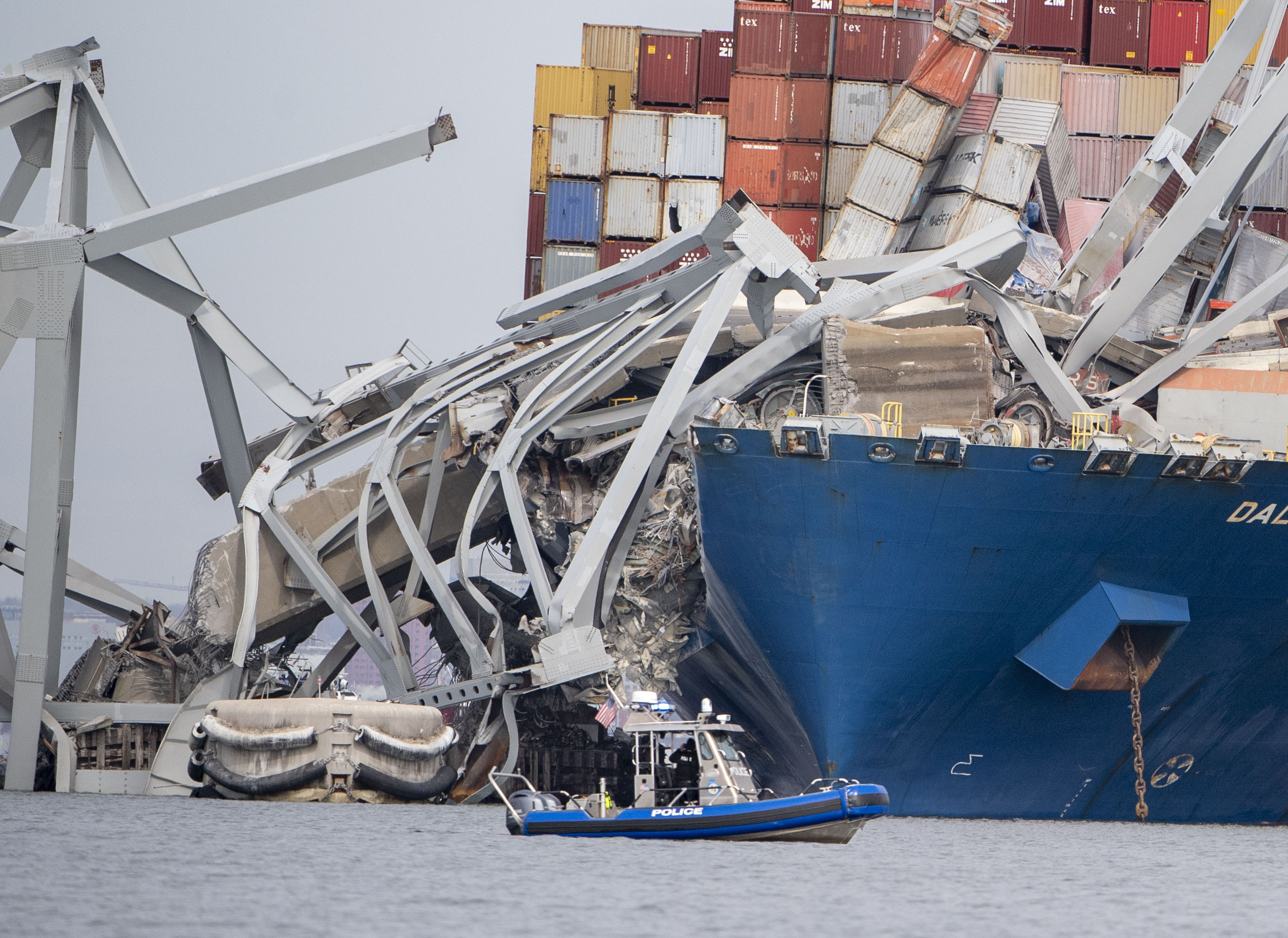Titanic law helps ship owner limit liability in Baltimore bridge collapse

The Key Bridge was hit by a ship and collapsed on Tuesday. Jonathan Newton for The Washington Post
The owner of the ship that rammed into a Baltimore bridge could face hundreds of millions of dollars in damage claims after the accident sent vehicles plunging into the water and threw the eastern US transportation network into chaos.
But legal experts said there is a path for reducing liability under an obscure 19th-century law once invoked by the owner of the Titanic to limit its payout for the 1912 sinking.
At the center of the legal fallout will be Singapore-based Grace Ocean, owner of the container ship Dali that crashed Tuesday into the Francis Scott Key Bridge at the start of a voyage chartered by the shipping giant Maersk.
Stationary Objects
The company could face a bevy of lawsuits from multiple directions, including from the bridge’s owner and the families of six workers who were presumed dead after a search in the Patapsco River.
Damages claims are likely to fall on the ship owner and not the agency that operates the bridge, since stationary objects aren’t typically at fault if a moving vessel hits them, said Michael Sturley, a maritime law expert at the University of Texas at Austin’s School of Law.
But an 1851 law could lower the exposure to tens of millions of dollars by capping the ship owner’s liability at how much the vessel is worth after the crash, plus any earnings it collected from carrying the freight on board, said Martin Davies, the director of Tulane University’s Maritime Law Center.
The law was passed initially to prevent shipping giants from suffering steep and insurmountable losses from disasters at sea. An eight-figure sum, while still hefty, would amount to “considerably less” than the full claims total, Davies said.
‘Very Unusual’
“It’s a very unusual casualty in one respect, particularly because of this footage of the whole bridge falling down,” Davies said. “But in many ways, it’s not unusual, because ships collide and there’s damage and there’s injury all the time.”
Lawrence B. Brennan, an adjunct professor of law at Fordham University School of Law in New York and an expert on admiralty and maritime law, said he assumes the Dali’s operator will shortly begin a proceeding in the US under the 1851 law, which was cited by the Titanic’s owner in a Supreme Court case more than a century ago.
The ship owner’s insurance would help the company through the legal risks. About 90% of the world’s ocean-bound cargo is insured by an arm of the International Group of Protection and Indemnity Clubs, which oversees the 12 major mutual insurance associations for ship owners.
A key to determining any insurance claims will be proving whether the accident was caused by negligence, and if so by whom, or mechanical failure, according to Bloomberg Intelligence. The ship is insured by the Britannia Protection and Indemnity Club, which is a mutual insurance association that’s owned by shipping companies. It’s one of the dozen clubs that make up the International Group of P&I Clubs.
That gives the policies related to the Dali a total insured limit of about $3 billion, a sizable sum but one that “would be very manageable for the global reinsurance market,” Bloomberg Intelligence analysts Matthew Palazola and Charles Graham said in a note.
“We are working closely with the ship manager and relevant authorities to establish the facts and to help ensure that this situation is dealt with quickly and professionally,” Britannia P&I said.
Bloomberg Intelligence also said Maersk may not be liable as the Danish company had no crew on board and the ship was operated by a charter company.
“Maritime insurance will likely cover some of the costs, yet uncertainty around the total liabilities and who will pay for them will likely weigh on Maersk’s spreads in the near term,” said Stephane Kovatchev, a credit analyst with Bloomberg Intelligence.
US Constitution
While federal courts have jurisdiction over maritime disputes, any victims of the bridge strike could potentially seek damages under a clause of the US Constitution that allows those injured in accidents at sea or who have property claims to pursue lawsuits in state court, said Charles A. Patrizia, who heads an American Bar Association committee on marine law.
In cases like these, businesses often sue for interruption, claiming economic losses. Those cases are rarely successful due to a law that largely limits the award of monetary damages to people who were physically injured, said Sturley, the UT Austin professor.
And what will become of the ship itself, which has been managed for Grace Ocean by Singapore-based Synergy Marine Group?
The ship’s owner may want to get it out of the US, but the Maryland Transportation Authority will likely seek to keep it under “arrest” while it pursues claims - and possibly until damages are resolved, said Brennan, the Fordham professor.
“The ship isn’t going anywhere for a while,” he said.
With assistance from David Voreacos and Laura Benitez.



